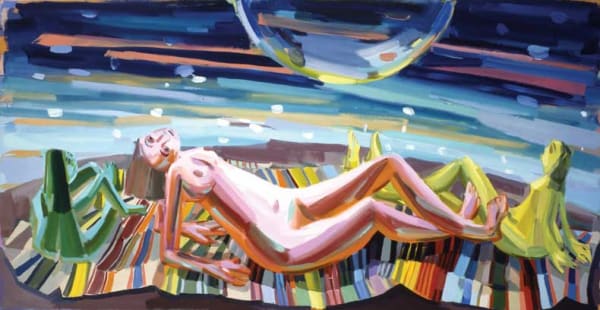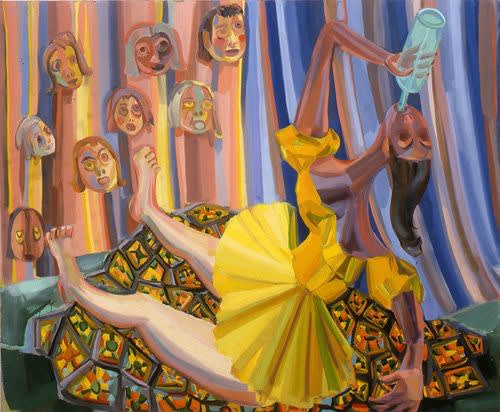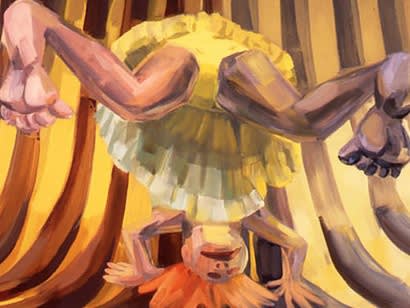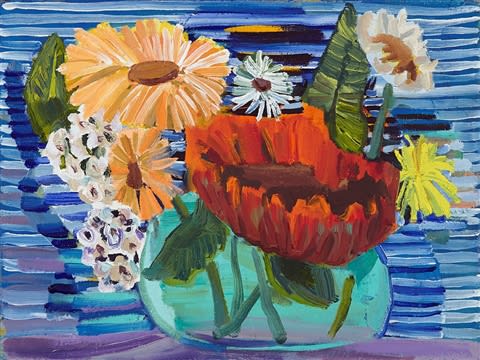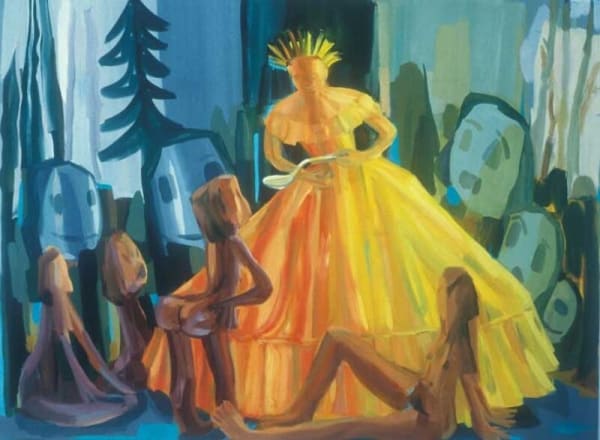JUDITH LINHARES
@JUDITHLINHARES
What can I say about Judith’s work! Judith grew up in California, before attending California College of Art for her BFA and MFA, then moving to New York city where she currently resides.
Her often figurative work is unutterably raw and immediate in style.
Up-close you can see the broad and often brightly coloured brush marks on linen depicting the darker figures contrasted against luminous backgrounds.
They effervesce the glorious inspirations of distorted myths, fables and legends, highlighted in female empowerment, strong women and animals.
Her work is not clearly expressionist, instead honing a tremendous technical prowess executed energetically and powerfully. There is a rawness and yet a formalism in the abstraction. They are gorgeous gems of artwork, and she is a genius.
-
"From then on I was always the class artist."
Judith, tell me, what is your artist story? What was your first memory that involved art? And when/ how did you decide to become an artist, or was it even a question?
My first memory that involved art was receiving “CURRIER AND IVES printmakers to the American People” I was six and this large book with reproductions of prints was a present form my aunt Pattie. The book was full of images of the ideal rural life, ship wrecks,
Washington crossing the Delaware ,hunting political cartoons and life on the Mississippi river.
I really did not decide to become an artist my identity grew over the years starting in grammar school where in the Fifth grade I was the only one in the class that could draw a Conestoga wagon (covered wagon) From then on I was always the class artist.
I love that. The Class Artist, how would you describe your work in a few words. And how would you like other people to describe your work?
My work is intuitive meaning it is not methodical or premeditated I have always been drawn to the gesture. I love the challenge of capturing an image with spontaneous gestures . I see abstraction as a basses of my education and my first love. I also love storytelling I think I am part of the struggle to redefine figuration after the initial impact of abstraction.
I know your work has influences in fairy tales. Could you tell us a bit more about this. Apart from this, who or what are your other biggest influences, and how do you find them?
I am interested in the idea of consciousness I define this as recognizing larger meanings and truths in an integrated way. Fairy tales for the most part come from mythology but they have come down to us over centuries in domestic and local environments around the kitchen table , at bedtime, and at the local bar. The stories have deep psychological significance and appear in all cultures their telling helps the tellers and listeners with difficult feelings and situations like , loss, betrayal, disadvantage, greed , sexual longing . -
You have such an interesting matriarchal family structure. How has this influenced you? And can you please tell us about your feminism?
My influences early on were Max Beckman and James Ensor my heart has always beat a little faster in the presence of many of the woman Surrealists so great to see the MOMA do justice to them in the new insulation featuring Leanora Carrington and Leonora Fini . Many of my influences arrived early as I grew up in LA and the LA county museum had a lot of great art in their collection. When I was still in grammar school I discovered Albert Pinkham Ryder on my own just wondering around the museum I have always loved his painting “Moonlit Cove”.
I do come from a family of amazons ; my mother and aunt were both very athletic and earned their own living all of their lives. My grandmother whom I lived with until I was twelve was a graduate of music conservatory and played the piano for silent movies back in the day. The positive side of growing up in this family as they were very encouraging of all things creative. I came to feminism early I remember reading Senone De Beauvoir “the Second Sex in high school. But my real understanding of what was a stake came in the seventies with the second wave feminism at this point I developed deep and lasting relationships with other women and recognized how little was
understood about women’s lives. This realization has given me a lot of confidence because I was and am sure my reality and concerns have not been seen and are not as yet part full part of a dominate culture.Talk us through your process of creating each piece? And how do you know when each piece is complete? Do you work from life?
The way I start a painting is to put down some color I like to think about color in terms of complements. The painting I am working on right now is violet and and yellow I think of color in terms of light .I want to make space with the composition and light with the color. I have a vocabulary of subjects and new subjects enter into the mix and old and forgotten subjects get brought back into play.
The process is very intuitive and many changes happen along the way whole areas get moved or erased I have learned some things for instance if I am spending too much time rendering I know I am in trouble and need to get back to thinking of the painting as a whole. I often work with the same image in different size canvases experimenting with different uses of color and paint application. I know when the painting is finish when the parts and the whole are working together.
I ask everyone these questions: Who is your favourite historical female artist(s), and who is/ are your favourite practicing female artist(s)
I love painting and like to look at and think about other artists work and try to understand what it is in the work that is attracting me. Right now I am interested in the work of Celia Paul, Historic figures include Florine Stettheimer, Frida Kahlo, Paula Modersohn -Becker, Leonora Carrington, Dorothea Tanning ,Merritt oppenheim, Maria Lasing , and of course Louise Bourgeois.

